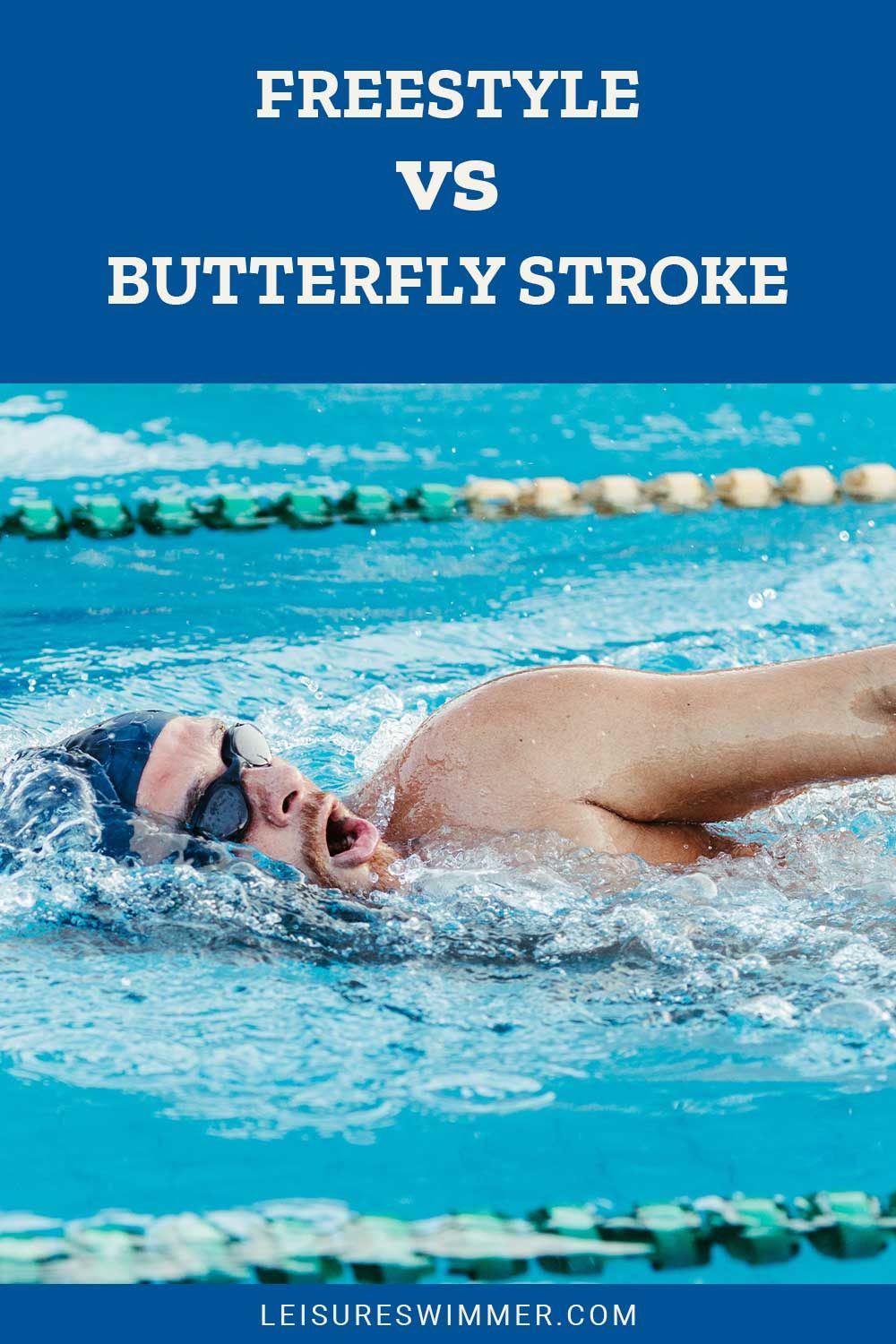Freestyle vs. Butterfly Stroke
We may earn commissions for purchases made through links on our site. Learn more on our about us page.
There are only four major recognized swimming techniques, doggy paddling does not count, but when it comes to discerning which is the fastest, it comes down to two styles.
The freestyle is considered the quickest form to which competitive world records will dictate, followed by the butterfly and others.
It might surprise you that the butterfly’s straight-line peak speed will actually outmatch the freestyle method. This is because of the double arm pulling action when compared to a single arm pulling the body forward.
This will also be more taxing on the body, as both arms will be involved in each arm stroke action in comparison to the one.

What are the Differences?
The main difference between these two styles will be the usage of the arms, both will have a similar kicking pattern as a steady propulsion source, but similarities end there.
The freestyle is a consistent speed form, which is better for endurance races when compared to the double-arm action of the butterfly.
Two arms allow the butterfly swimmer to pull themselves through the water in the fastest form currently known to man. The competition between these two forms is enough to spark challenges across the world and debates on functionality, amongst other talk.
Pros and Cons of Freestyle vs. Backstroke
The pro for the backstroke will be the open channel to oxygen throughout the swim, as the mouth and nose will be pointed up and away from the water’s influence.
The con is that there are going to be blind spots when swimming in this fashion, in open water, that could potentially mean a shark stalking you going unnoticed.
On the flip side, the pro for the freestyle will be to have a quick and endurance-tested swimming technique that can help one swim endurance events or get across vast spaces of open water.
Con will be the need for timed breathing, and the longer a swimmer is in the water, the more likely a mistake is to be made and water to get into the respiratory system.
Which one Helps you Swim Faster?
Each will be the better choice in separate events. For instance, when it comes to a sprint of one hundred meters, there will be a tendency to go with the butterfly and use the double arm method for top speeds in the water.
On the other hand, it would be smarter to utilize the freestyle technique when it comes to an endurance race, especially in open water.
This may not be as fast as the butterfly, but as the race extends into the endurance lengths, the constant speed and ability to conserve energy using one arm at a time become strategy.
Which One is More Physically Demanding?
This will be, by far, the butterfly stroke, which will require the use of a full-body action that involves both arms pulling while the legs kick constantly.
Some call this technique a full body workout because of how the entire network of muscles from the shoulders to the abs to the calves are used and won’t be used outside the exercise needs.
The freestyle allows for a kind of respite when it comes to the switching of arms charged with pulling the body through the water aside from the kicking legs.
Which one can Beginners Learn Faster?
The easiest technique to learn will be the doggie paddle, which will not be a viable swimming style when you reach older years. The general consensus will say that the easier of these two techniques will be the freestyle.
When you see films or swimming on television, there will be plenty of examples to mimic because nearly all actors use this stroke.
Also called the front crawl, the movements of the freestyle will be similar to what a person would do to crawl across the ground and pull themselves with each handful of earth. The difference being the handfuls will be of water when swimming the freestyle.
Final Thoughts on Freestyle vs Butterfly Stroke
Each of the four-stroke styles will have a utility that will make them effective in different situations. For example, the backstroke is a technique that keeps someone’s face above water, while the butterfly is designed to move quickly and power through the water.
The freestyle is an endurance technique and the introductory style that will be taught first by swim coaches and trainers.
If you are just learning for the basic survival instinct, stopping at the freestyle will be sufficient, but if you are looking to master the art of swimming and possibly compete for medals, then push yourself to learn all four until you find the one your best at.


